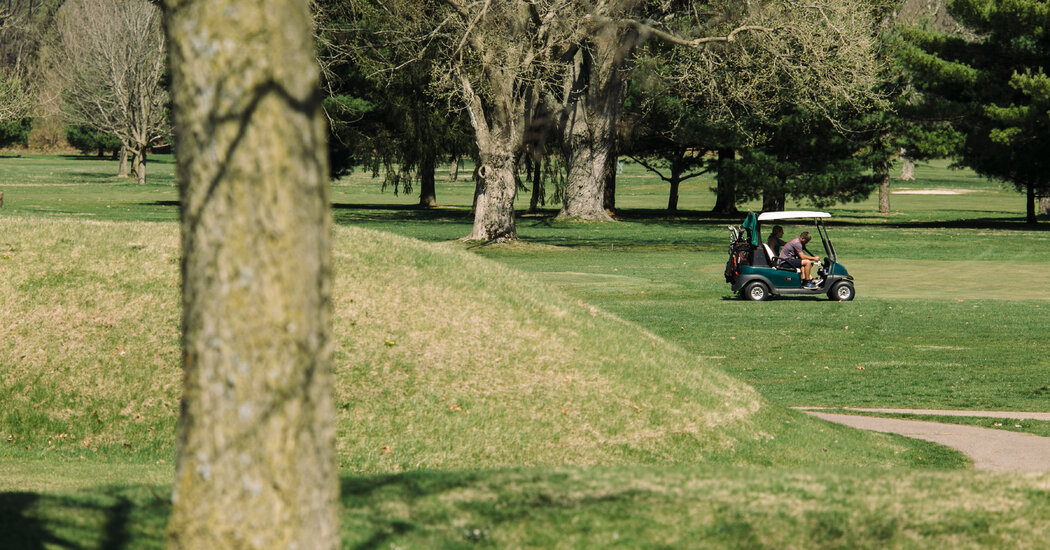Nine months after the Ohio Supreme Court ruled that a country club must sell its lease to the state historical society that owns the land containing Native American earthworks, golfers are still pushing carts over the mounds and whacking at them with 3-irons.
But now those Octagon Earthworks, which Native Americans constructed about 2,000 years ago as a means of tracking the movement of the sun and the moon through the heavens, have officially been named a UNESCO World Heritage site.
“Inscription on the World Heritage List will call international attention to these treasures long known to Ohioans,” said Megan Wood, the executive director and chief executive of the Ohio History Connection, which worked with the National Park Service and the Interior Department to have a combination of eight earthworks sites in central Ohio recognized.
Those sites, collectively known as the Hopewell Ceremonial Earthworks, include the Octagon Earthworks in Newark, which were created one basketful of earth at a time with pointed sticks and clamshell hoes.
The designation, announced on Tuesday in Riyadh, Saudi Arabia, puts the earthworks among just over 1,000 World Heritage sites. There are only 25 in the United States, among them the Grand Canyon, Independence Hall and Hawaii Volcanoes National Park.
“The historical, archaeological and astronomical significance of the Octagon Earthworks is arguably equivalent to Stonehenge or Machu Picchu,” Justice Michael P. Donnelly wrote in the Ohio Supreme Court’s decision in favor of the state historical society, which upheld two rulings by lower courts.
The recognition comes after a yearslong battle between the Moundbuilders Country Club, which had leased the land since 1910 and operated a private golf course atop the earthworks, and the Ohio History Connection, which owns the site and intends to open it as a public park.
The History Connection sued the country club in 2018 in an attempt to acquire the lease, which runs through 2078. Federal officials had told the historical society that securing World Heritage recognition, which brings international acclaim and legal protection, would be impossible without full public access to the site.
The club had argued that ending the lease was not necessary to establish public use and had contended that it had preserved and cared for the mounds. Its members, the president of the club’s board of trustees, David Kratoville, told The New York Times in 2021, “come out for a day and clean up…
Click Here to Read the Full Original Article at NYT > Travel…
